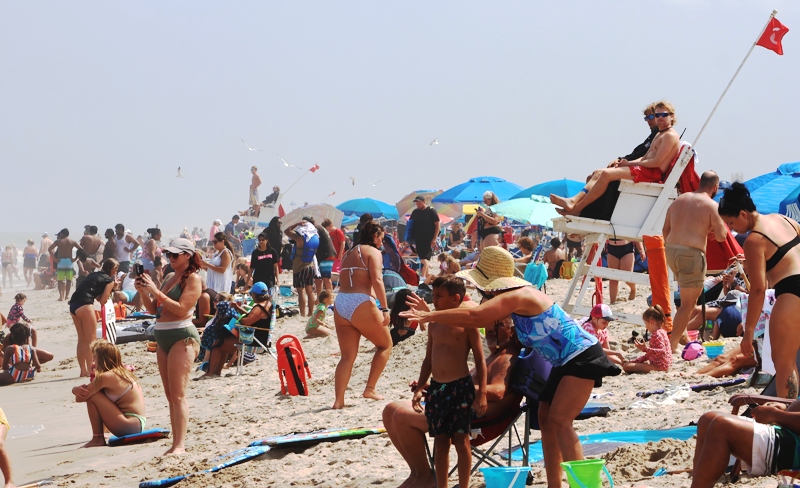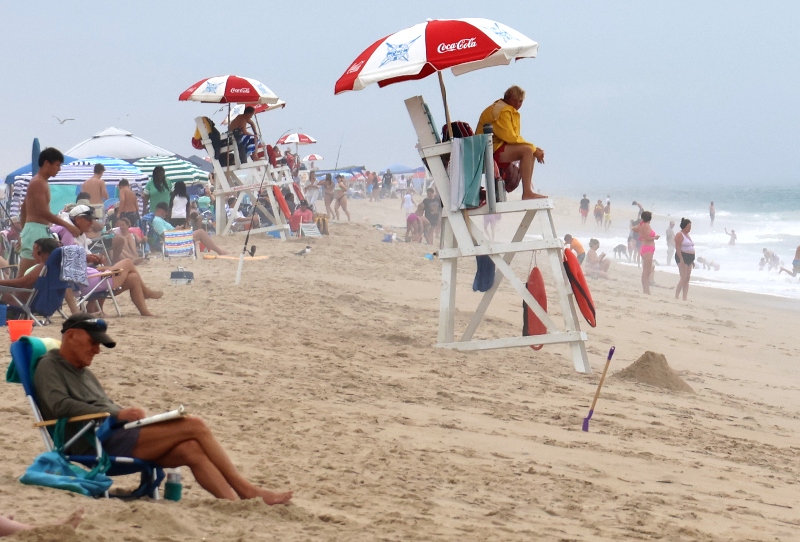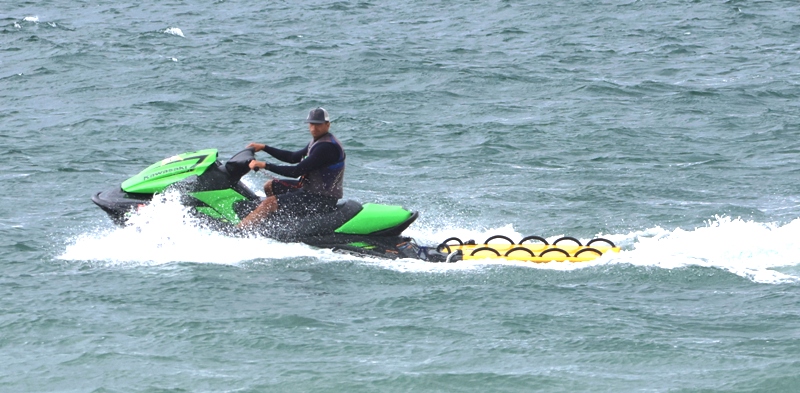Comparing OCBP, RBP Lifeguarding Strategies
The lifeguarding techniques between Rehoboth Beach and Ocean City differ significantly despite the ultimate goal of rescuing swimmers.
Ocean City has 90 single-guard stands covering 10 miles of beach while Rehoboth has 16 stand locations with typically two guards on each stand. Some Rehoboth locations even have two stands, especially this summer with the loss of Deauville.
When Rehoboth Beach guards respond on a rescue, Chief Derek Shockro explains, they use the “cover down” system which was conceived decades ago by then-RBP Capt. Frank Coveleski. When the guards from a particular stand go on a water rescue or medical emergency they radio or signal to both adjacent stands for a “cover down.” One guard from each of the two neighboring stands responds to assist, Chief Shockro says. The first to arrive backs up the two making the rescue, if necessary, while the other typically climbs on the vacant stand to continue coverage.

If the stands have only one guard, such as during lunch or afternoon workouts, a spare guard from Baltimore Avenue provides that extra guard needed as guards from each stand move over one chair, south or north, to fill in for the assist.
Ocean City uses a “covered system” when a guard goes in from any of the 90 stands to make a rescue. When the guard decides to intervene, the guard blows two whistles, Capt. Butch Arbin explains. Even if the guards on both sides can’t hear because of the wind blowing, they should see the neighboring guard go and the buoy is gone, they then know something’s going on. They have the responsibility to get down, get their buoy and head that way as the “covering guard,” he says. Once they get halfway between their stand and the incident location, they stand there and hold their buoy up and stand guard, he says.

If the guard making the rescue requires assistance, perhaps for a neck injury, then the “covering guards” know that they need to come the rest of the way and join the rescue. The next guard south of that and north of that are holding their buoys up while standing in their stands. If something happens and the initial guard requires additional assistance, the neighboring guards move in and keep feeding into that area.
Coverage at the other stands is maintained by guards who “slide” into the area as needed. OCBP has 15 ATVs that also respond. “As the stands get further apart we do not cover in the same way,” Capt. Arbin explains, “We rely on our ATVs as the primary cover.”
During workouts or breaks the lifeguards are required to remain in the area of their crew (OCBP has 18 crews) so that in an emergency they are available to respond, Capt. Arbin points out. In addition to a lunch rover who is not assigned to a stand in the crew, there is often an additional unassigned surf rescue technician (SRT) for the crew. This provides an additional SRT for most of the day.
OCBP also has a guard deployed much of the time on a personal watercraft with an attached rescue sled.

Except for the three surfing beaches, all of Ocean City’s 10 miles are designated swimming beaches. “We do the one-per-stand and then we guard all 10 miles of beach. Whether we have 10 stands or 90 stands, we guard 10 miles of beach, which is hard to do, because sometimes the guards are a mile apart. But everybody pays taxes, everybody gets a guard,” Capt. Arbin says. “We’d have to have over 300 people to staff two per stand,” he points out.


